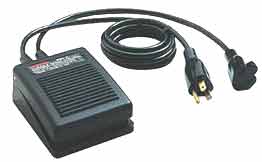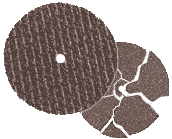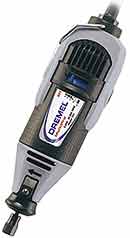 |
Hints
and Tips |
|
|
But it is also one of the most dangerous to the careless user. Here are a few tips for safe and effective use of the motor tool. |
 |
ALWAYS
Wear Eye Protection. |
 |
Use a Speed Control - at the lowest practical speed. A motor tool should always have a speed control for safe operation. The best control is provided with a foot pedal, but a dial on the tool or desktop is much better than nothing. Always use the slowest speed that will get the job done. Excess speed can cause bits to be damaged or to shatter, plastic materials to melt and grab the bit, and brush-heads to fly apart, – not to mention excess cutting of the workpiece. |
 |
|
|
Use pliers or other tools to hold small parts while working on them, so that if the bit slips, your fingers are far from the workpiece. A strong rubber band around the handles of the pliers will keep them gripping the workpiece, even if your hand-pressure should slacken slightly. |
 |
- NEVER use a brush-head at high speeds - only at low and medium speeds. - Work in an enclosure (such as a simple cardboard box) to catch the wires as they fly out. - Vacuum around the work area and floor after using wire brushes. |
The Dremel site has good basic instructions and more safety tips for motor-tool use, as well as a list of tools, bits and accessories. |
|
|
Hop
the Fast Freight to other Hints and Tips |
|
|
Take
the Express |
How
to Order |
|
All
text, photos, and artwork are COPYRIGHT©2003 by David Helber. "Marx"
is a registered trademark of Marx Toys, Inc. and Marx Trains. |
